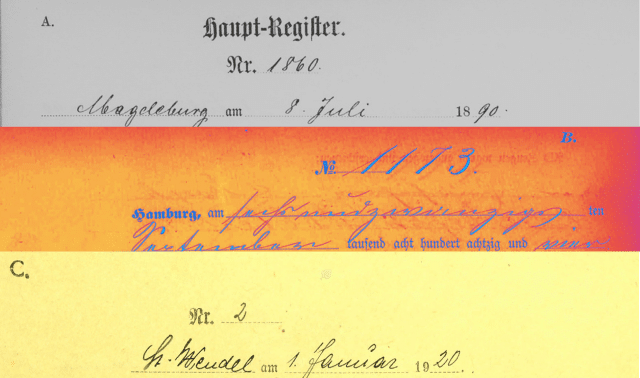Sign up for the Family Tree Newsletter! Plus, you’ll receive our 10 Essential Genealogy Research Forms PDF as a special thank you.
Get Your Free Genealogy Forms
"*" indicates required fields

Don’t be daunted by documents in German, or think that you can’t research your German ancestors just because you don’t know the language. The fact is, you don’t have to be fluent to find those records, you just have to know the key words and phrases commonly used in the documents, along with a few handy translation tools.
1. Ignore the Ellis Island myth
Many people believe that their German ancestors’ names were changed at Ellis Island, but the name change at Ellis Island is, in reality, a myth. Expert German genealogist James Beidler states that there are two things that may responsible for the many variations you’ll find in your ancestor’s records: one, German names were often mixed up by census takers and courthouse clerks, and two, standardized spelling wasn’t a thing—on either side of the Atlantic—until well into the 20th century.
2. Understand your German ancestors’ geographic names
Your German ancestor might share a surname with a city or place, but that doesn’t necessarily mean that’s where you’ll find their records. Someone taking a geographic name is likely to have moved away from that city rather than to have lived within it. So Phillip Marburger may be Phillip from Marburg, rather than Phillip in Marburg—which would distinguish him from other Phillips in his new environment.
3. Learn German words for dates and other key genealogy terms
Sometimes you’ll find records in which the day of the month is missing or difficult to read but contains a day of the week that is legible. In those cases, you can use a perpetual calendar to track down the date and determine which day it may have fallen on. Learn the basic language of names and places, along with the key vocabulary terms you’ll find in many of your German ancestors’ church and civil records.
4. Look for recorded clock times in records
Birth and baptismal records are the primary German records in which you might find references to clock times. Usually, they’ll simple refer to the hour (Uhr), but the might also refer to the periods of the day, such as morning or evening, or the quarter-hours. Something to keep in mind: they usually start counting toward the next hour right after the “old” hour is struck—so you’ll see drei viertel vor vier am Nachmittag (three quarters til four in the afternoon, or 3:15 p.m.).




